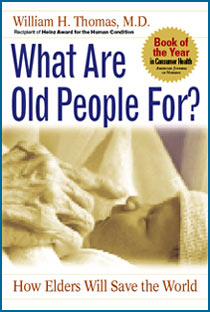![]()
Search
Recent Posts
- ChangingAging.org Redesign -- Please Bookmark!
- Disaster in Buffalo
- Power Up Friday
- Blanchard WinsDays
- Kevin Frick writes...
- Monkhouse Monday
- Getting Closer!
- Blanchard WinsDays
- Power Up Friday
- My Pick for Health and Human Services
- Understanding Health Care Reform
- Facts Are Stubborn Things: Social Security Edition
- Monkhouse Monday
- Localism is Coming
- Krugman Can't Wait...
Recent Comments
Category Archives
- AGING 100
- Aging
- Culture
- Dementia
- Eden Alternative
- Erickson School
- Green House
- Health Policy
- Longevity
- Media
- Rockets
Monthly Archives
- February 2009
- January 2009
- December 2008
- November 2008
- October 2008
- September 2008
- August 2008
- July 2008
- June 2008
- May 2008
- April 2008
- March 2008
- February 2008
- January 2008
- December 2007
- November 2007
- October 2007
- September 2007
- August 2007
 Subscribe to this blog's feed
Subscribe to this blog's feed
Announcements

Blog Data
« 12 People who Are Changing Aging -- No. 5 | Main | Grannies Are Cool... »
February 22, 2008 |Permalink |Comments (0)
Power Up Friday: "I Want To Be Sedated"
A recent issue of “Caring for the Ages” reports that New York State has seen a leveling off of the use of antipsychotic drugs in people with dementia in nursing homes. These drugs, developed for schizophrenia, have also been used to treat behavioral symptoms that can accompany dementia. In 2005, about 32.5% of New York nursing home residents with dementia were on the medications, and in 2006 it dropped slightly to 31.9%. Dr. Christine Teigland of NYAHSA commented that this was hopefully a positive trend, and that a rate of more than 30% “is probably too high”.
No argument here, except that I would replace “probably” with “way, way”. Overall about 40% of people with dementia in nursing homes of the industrialized world are on these drugs. Perhaps we are seeing a moderation of the epidemic use of these drugs, but I remain skeptical. A little background:
As a result of OBRA legislation, by 1996 the use of these drugs dropped to 16% of all people in nursing homes (with or without dementia). Then a new generation of drugs was introduced. These “atypical antipsychotics” were touted as being safer and more effective, and their use began to skyrocket.
By 2000, the number of Medicare recipients on these drugs had nearly doubled, to 28%. From 2000 – 2005, the total number of antipsychotic prescriptions in the country rose from 29 million to nearly 45 million. (The only target population that increased signicantly in that period was the number of people with dementia.)
But the “atypical” drugs have been found to be much less safe and effective than they were originally claimed to be. These new concerns may explain why their use has leveled off in some areas. Will the trend continue?
A recent industry web posting indicates that there are 40 new antipsychotic drugs in the R&D pipeline. The industry seems convinced that these drugs will be a mainstay of treatment for the increasing elder population who will develop dementia. No doubt, this next crop of drugs will also be released with claims of being “safer and more effective”.
Changing the care environment can drastically reduce the use of these sedating and potentially harmful drugs. But that takes a lot of work - it’s much easier to simply give a pill and sedate the behavior. When will we learn that there is no quick fix?
--Al Power














